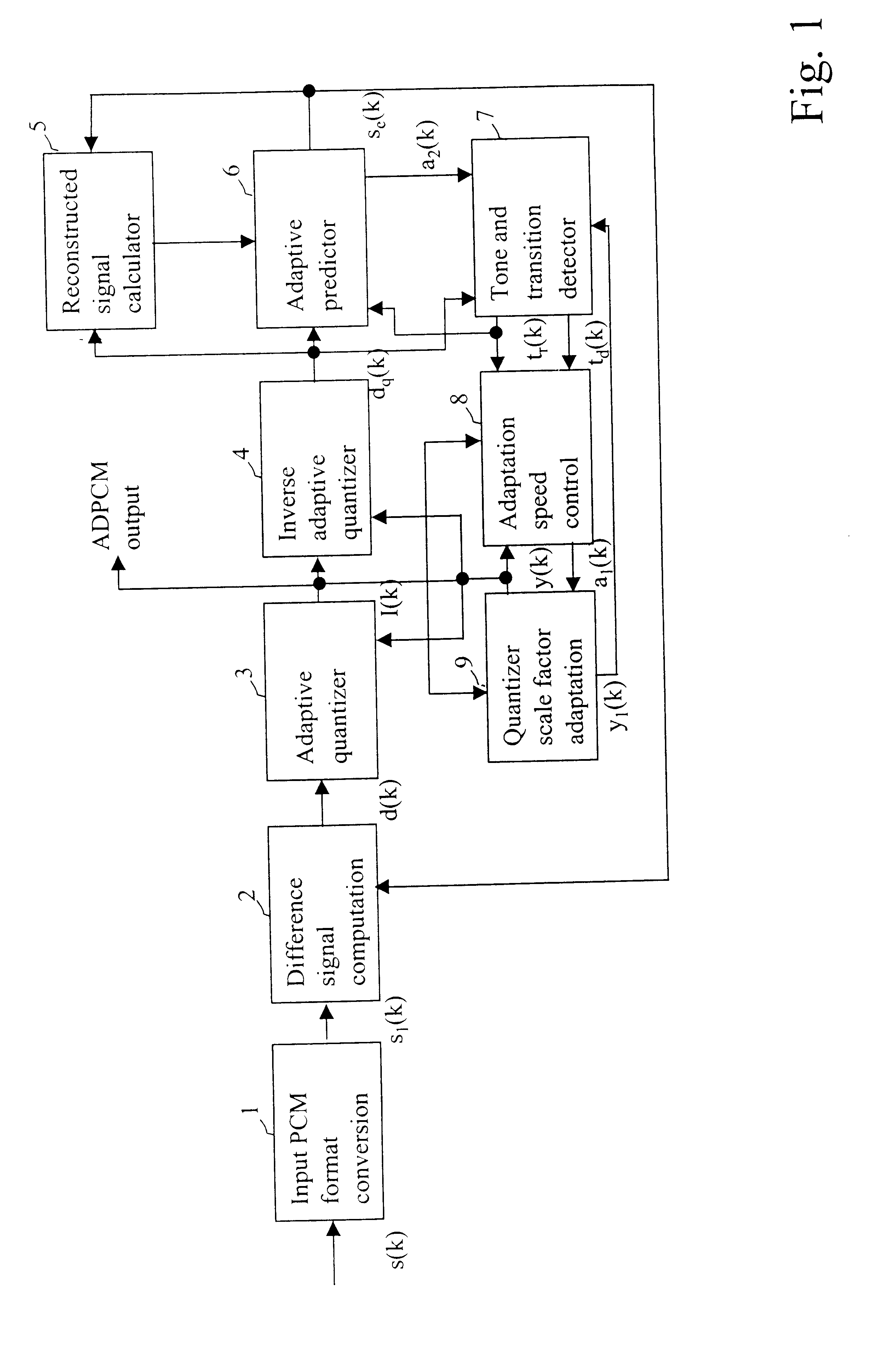Error recovery method and apparatus for ADPCM encoded speech
a technology of error recovery and encoded speech, applied in the field of error recovery of encoded speech, can solve the problems of sample i(k) being transmitted over the channel to deviate from their correct values, the channel error rate experienced is typically much greater, and the g.726 adpcm decoding and encoding system quickly degrades when subjected to such error rates. achieve the effect of reducing the audible clicks or po
- Summary
- Abstract
- Description
- Claims
- Application Information
AI Technical Summary
Benefits of technology
Problems solved by technology
Method used
Image
Examples
example 1
In one exemplary implementation, the preferred values for the parameters associated with operation of non-linear processor 116 and attenuation profiler 118 are set forth in Table 1 below:
example 2
In a second example, the subject invention is implemented in a communications systems configured in accordance with the Japanese PHS standard. Some of the characteristics of this standard are provided in the following table:
These parameters differ by degree not in kind from the corresponding parameters for the DECT standard which are summarized in the following table:
The application of the subject invention to a communications system configured in accordance with the PHS standard will be readily apparent to one of skill in the art in view of the discussion in the body of this disclosure relating to application of the subject invention to a communications system configured in accordance with the DECT standard.
PUM
 Login to View More
Login to View More Abstract
Description
Claims
Application Information
 Login to View More
Login to View More - R&D
- Intellectual Property
- Life Sciences
- Materials
- Tech Scout
- Unparalleled Data Quality
- Higher Quality Content
- 60% Fewer Hallucinations
Browse by: Latest US Patents, China's latest patents, Technical Efficacy Thesaurus, Application Domain, Technology Topic, Popular Technical Reports.
© 2025 PatSnap. All rights reserved.Legal|Privacy policy|Modern Slavery Act Transparency Statement|Sitemap|About US| Contact US: help@patsnap.com



